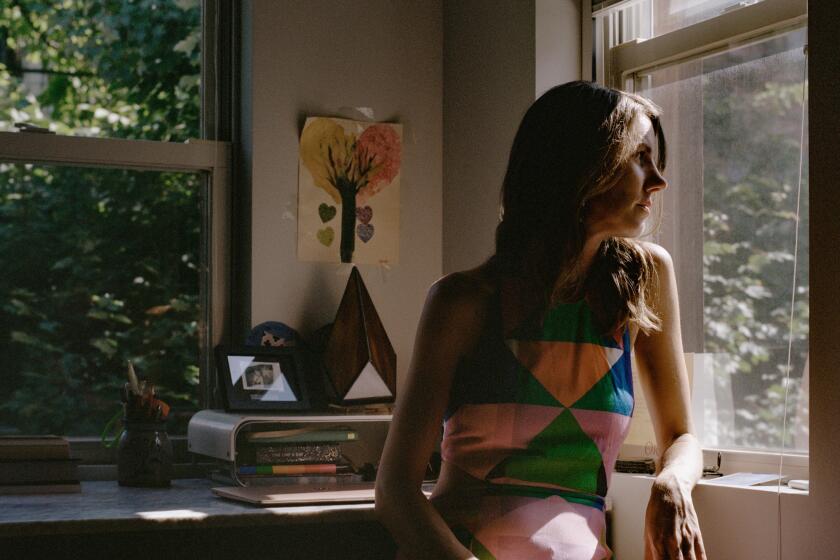The unknown Richard Diebenkorn
Richard Diebenkorn is an artist with both Northern and Southern California roots. Born in Portland, Ore., he grew up in San Francisco, and played a big role in the postwar Abstract Expressionist scene centered at the California School of Fine Arts (now the San Francisco Art Institute) before moving to Los Angeles in 1966 to teach at UCLA. Late in his life, he moved back to Northern California, where he died in 1993 at the age of 70.
His work is marked by an interplay between the abstract and the concrete; as he explained in the late 1950s, “One wants to see the artifice of the thing as well as the subject.” Two decades after his death, the intention resonates, with its sense that what is important in a work of art, any work of art, is “a feeling of strength in reserve — tension beneath the calm.”
Diebenkorn is the subject of two exhibitions this fall: “Richard Diebenkorn: The Berkeley Years,” at San Francisco’s de Young Museum, and “The Intimate Diebenkorn: Works on Paper,” which will open at the College of Marin Fine Arts Gallery in September before going on the road.
In conjunction with this latter show, Kelly’s Cove Press, an independent press in Berkeley, has put out a pair of books, “Richard Diebenkorn: Abstractions on Paper” (128 pp., $20 paper) and “Richard Diebenkorn: From the Model” (128 pp., $20 paper) that together form a retrospective in miniature of the artist’s lesser known work, much of which is being published here for the first time.
“Abstractions on Paper” and “From the Model” are very different collections, but together they add up to a nuanced portrait of an artist engaged with his world. Edited, or compiled, by Kelly’s Cove publisher Bart Schneider and Bay Area painter Chester Arnold (who is curating the College of Marin show), they function less as catalogs than as scrapbooks, impressionistic and nuanced in their own right.
The 88 images in “Abstractions on Paper” span three distinct eras, including his legendary Ocean Park period, which spanned the 20 or so years he lived in Los Angeles. Most fascinating are the relationships: The way the blots of color, almost Rorschach-like, of his early paintings solidify as he gets older into more clearly delineated shapes and lines.
The same is true of “From the Model,” which features 99 figure drawings, most in charcoal, dating from the mid-1950s to the early 1960s. The images are sketch-like, almost indistinct in places, with bodies and faces represented by a few lines, a blur of color, in some cases little more than a hint of expression or personality.
And yet, out of this stripped-down vision, Diebenkorn evokes whole lives full of emotion, invested with a quiet waiting that verges on despair. As Arnold observes in a brief introduction, “he rarely paid academic homage to anatomy, yet the accuracy of his readings yields that rare fusion of knowing and questioning, of grace and impetuousness that give his drawings their dignity and power.”
“Abstractions on Paper” and “From the Model” are small books — not catalogs but something far more intimate, like a piece of the artist you can hold in your hand. That’s the point, of course, for the material they bring together operates in similar fashion, drawing us ever closer to the page.
“I came to mistrust my desire to explode the picture and super-charge it in some way,” Diebenkorn once said, and the work in these two collections seems to emerge directly out of such a statement, showing us what can happen when an artist sets aside grand aspirations and simply creates.
ALSO:
Amy Gerstler and Alexis Smith discuss the art of collaboration
Lisa Lyons and Gary Kornblau on the closing of their imprint BuK
More to Read
Sign up for our Book Club newsletter
Get the latest news, events and more from the Los Angeles Times Book Club, and help us get L.A. reading and talking.
You may occasionally receive promotional content from the Los Angeles Times.









